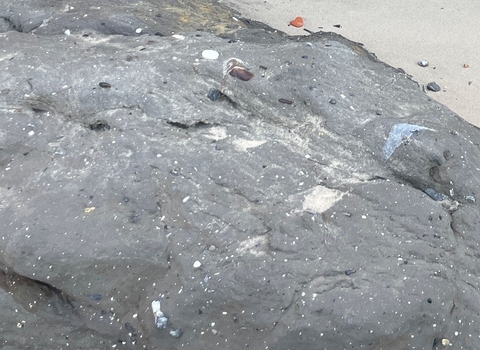What is a Boulder Clay?
Boulder Clay is the clay, sand, stones and boulders left by ice sheets and glaciers in the last 2.6 million years – so it is a very young deposit and not really a rock! The term Boulder Clay is widely used outside geology but geologists prefer to call it Till or Diamicton as Boulder Clay doesn’t always have boulders!
How do I recognize it?
In Northumberland it is generally a stiff grey-brown clay with sand, stones and cobbles. It takes its colour from the Carboniferous rocks it has moved over. Many gardeners will know it well as it produces sticky, heavy soils that are not easy to work, but can be quite fertile.
Where do I find it?
It is common all over the county but in particular in the south east. You will often see it above the bedrock in new road cuttings, and as it is prone to slumping you may see little landslides in it in road cuttings and river banks.
How was it made?
By ice sheets (and glaciers) moving across the land surface and steadily eroding and grinding off rock particles and picking up silt, sand, pebbles and boulders in one area and then plastering it over the surface in another.
What does a Boulder Clay landscape look like?
In Northumberland it typically looks like a relatively flat featureless plain – the country between the north Newcastle and Morpeth and the coast is a good example.
Which plants like Boulder Clay?
Boulder Clay usually produces heavy soils which are generally poorly drained and so plants which prefer wetter conditions like rushes and buttercups are often found growing on it.
What use is it?
Sometimes when it has less stones the clays have been used for making bricks.

